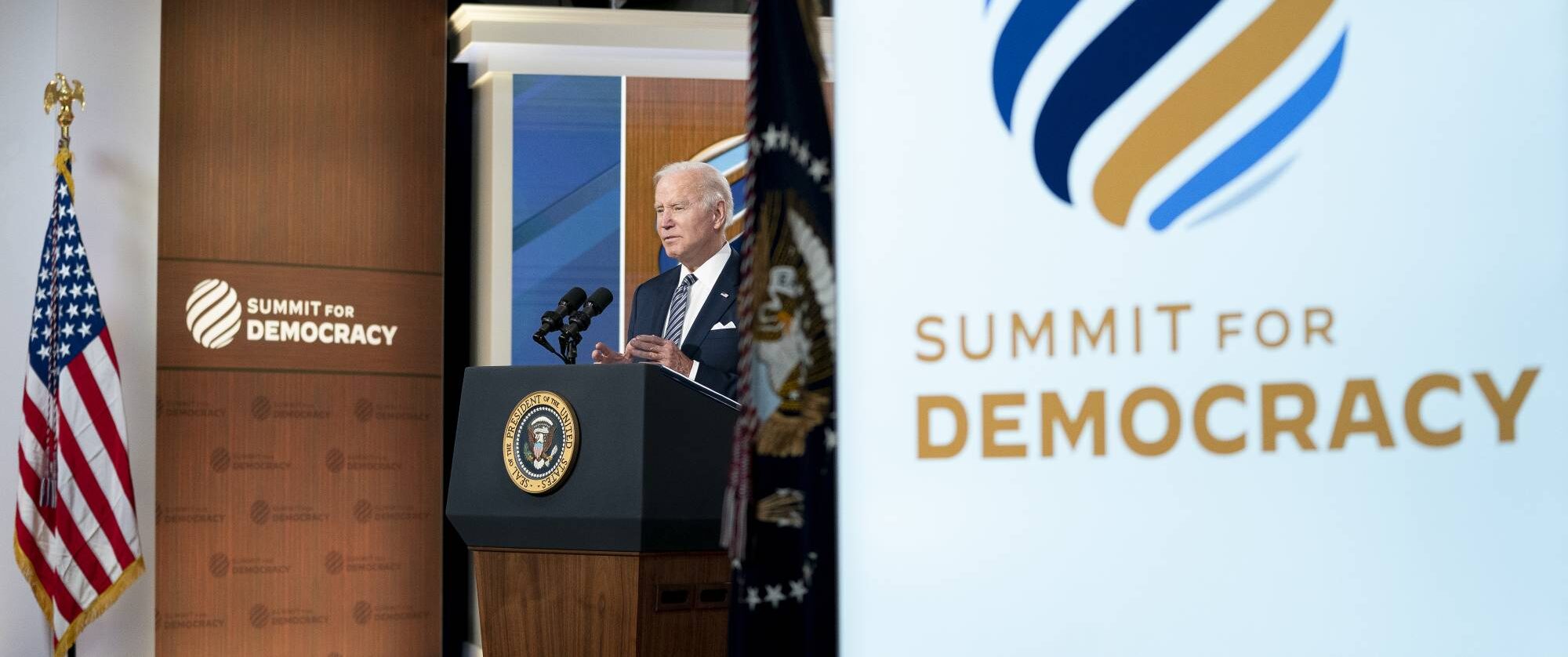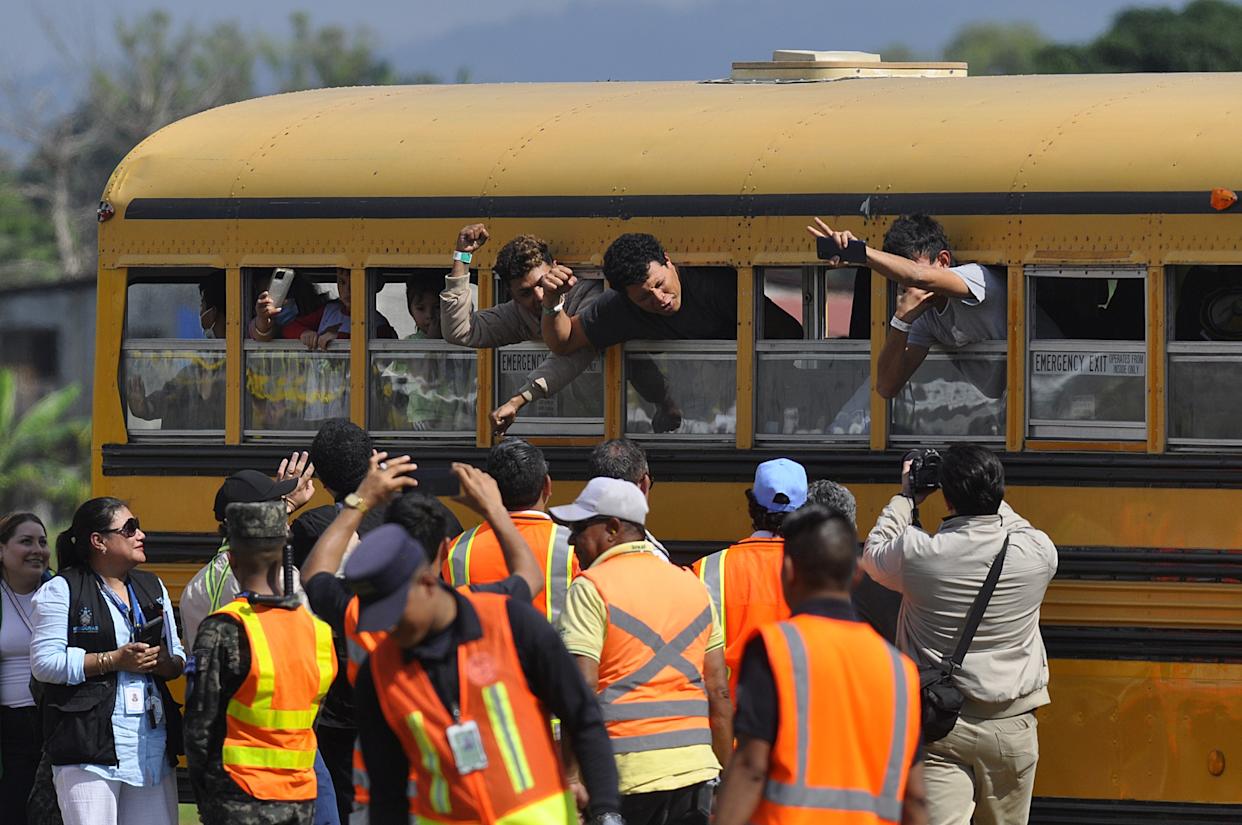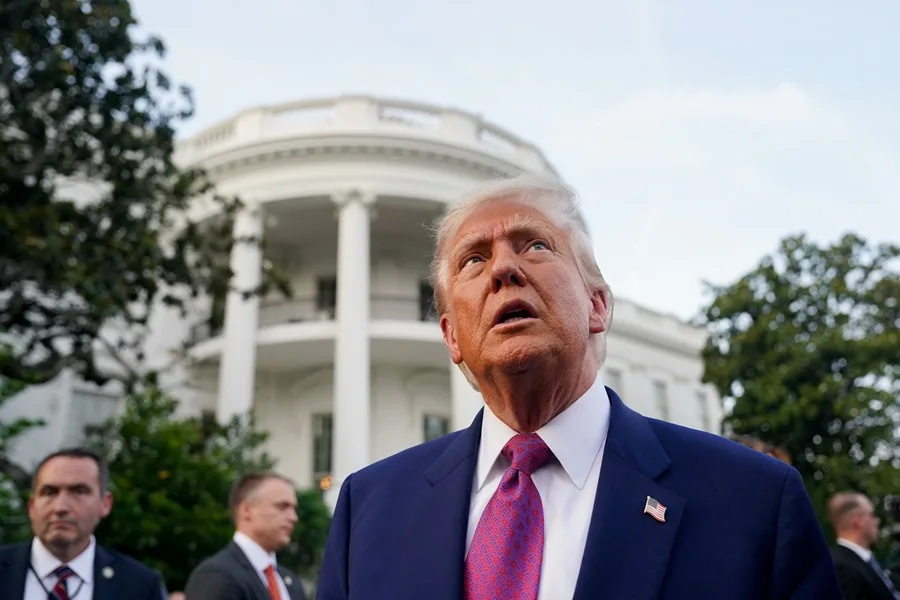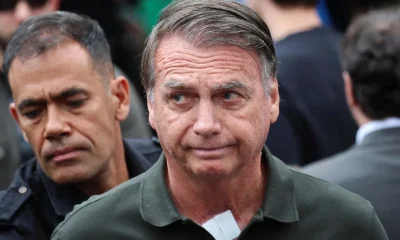International
China brands US democracy ‘weapon of mass destruction’

AFP
China branded US democracy a “weapon of mass destruction” on Saturday, following the US-organised Summit for Democracy which aimed to shore up like-minded allies in the face of autocratic regimes.
China was left out of the two-day virtual summit — along with countries including Russia and Hungary — and responded by angrily accusing US President Joe Biden of stoking Cold War-era ideological divides.
“‘Democracy’ has long become a ‘weapon of mass destruction’ used by the US to interfere in other countries,” a foreign ministry spokesperson said in an online statement, which also accused the US of having “instigated ‘colour revolutions’” overseas.
The ministry also claimed the summit was organised by the US to “draw lines of ideological prejudice, instrumentalise and weaponise democracy… (and) incite division and confrontation.”
Instead, Beijing vowed to “resolutely resist and oppose all kinds of pseudo-democracies”.
Ahead of the summit, China ramped up a propaganda blitz criticising US democracy as corrupt and a failure.
Instead, it touted its own version of “whole-process people’s democracy” in a white paper released last week that aimed to shore up legitimacy for the ruling Communist Party, which has become increasingly authoritarian under President Xi Jinping.
While the US has repeatedly denied there will be another Cold War with China, tensions between the world’s two largest economies have spiralled in recent years over issues including trade and technological competition, human rights, Xinjiang and Taiwan.
The US Treasury on Friday sanctioned two high-level Chinese officials for human rights abuses in the Xinjiang region and placed Chinese AI surveillance firm SenseTime on a blacklist for its facial recognition technology targeting the Uyghur minority.
Taiwan, a democratic self-ruling island that is claimed by China, was invited to the US summit in a clear snub to its larger neighbour.
But Beijing got a boost in the middle of Biden’s summit when Nicaragua dropped its previous diplomatic alliance with Taiwan, saying it only recognised China.
The announcement leaves Taiwan with only 14 diplomatic allies. In response, the US State Department called on “all countries that value democratic institutions” to “expand engagement” with the island.
International
Meta Says Russia Seeks to Ban WhatsApp for Defending Secure Communication

U.S. tech giant Meta, the parent company of WhatsApp, said that Russia is seeking to ban the messaging app because it “challenges government attempts to violate people’s right to secure communication.”
Russian authorities have encouraged citizens to switch to state-backed applications, and in August they already blocked WhatsApp’s calling feature.
On Friday, the communications regulator Roskomnadzor claimed that the platform was being used to “organize and carry out terrorist acts in the country, recruit perpetrators, and facilitate fraud and other crimes.”
“If the messaging service does not comply with Russian law, it will be completely blocked,” the regulator warned.
WhatsApp remains one of Russia’s most widely used messaging services, alongside Telegram.
Moscow is pressuring both platforms to grant authorities access to user data upon request for investigations into fraud and activities the government labels as “terrorist.”
Human rights advocates fear the demand could be used to target critics of the Kremlin, President Vladimir Putin, or the war in Ukraine.
International
Archbishop Wenski criticizes Trump’s deportation policies, calls for stronger push for reform

The Archbishop of Miami, Thomas Wenski, has called for increased pressure on the U.S. Congress to advance comprehensive immigration reform and criticized President Donald Trump’s mass deportation policies, arguing that they “do nothing to help.”
“We need to apply more pressure on Congress so lawmakers can make the necessary changes. It is also important for the Administration to listen to our voice. We do not want to be anyone’s enemy—we are Americans,” Wenski said in an interview with EFE.
The religious leader, who heads one of the dioceses with the largest Latino and Haitian populations in the United States, issued a call to defend the rights of migrants. He also emphasized that the U.S. Conference of Catholic Bishops (USCCB) has maintained a strong and public stance in favor of migrants for decades.
International
Trump relaunches diplomatic push to finalize U.S.-Backed peace plan for Ukraine War

U.S. President Donald Trump announced on Tuesday that his diplomatic team will resume meetings with delegations from Russia and Ukraine in an effort to pressure both sides to accept the peace plan proposed by Washington to end the war in Ukraine.
As part of this new round of talks, U.S. Special Envoy Steve Witkoff will travel to Moscow to meet with Russian President Vladimir Putin. Meanwhile, Army Secretary Dan Driscoll will hold discussions with Ukrainian representatives to narrow differences on the remaining points of the agreement.
Trump also confirmed his intention to meet personally with Ukrainian President Volodymyr Zelensky and with Putin, though he emphasized that such meetings will only take place “when the agreement is fully finalized or in its final stage.”
The president claimed that his administration has made “tremendous progress” toward resolving the conflict and reiterated that the war “never would have started” if he had been in the White House at the onset of the crisis.
The U.S.-backed peace plan consists of 28 points and has been revised following feedback from both sides. According to Trump, only “a few points of disagreement” remain under active discussion.
One of the most controversial aspects of the proposal is the suggestion that Ukraine cede parts of the Donbas region to Russia and limit the size of its armed forces. Kyiv is working closely with Washington to soften these clauses in search of an arrangement that does not compromise its sovereignty or security.
With this diplomatic push, Trump aims to solidify his role as the main mediator in the conflict and steer the war toward a political resolution after years of devastation, humanitarian crisis, and rising global geopolitical tensions.
-

 International4 days ago
International4 days agoTrump relaunches diplomatic push to finalize U.S.-Backed peace plan for Ukraine War
-

 International4 days ago
International4 days agoBolsonaro misses appeal deadline, faces imminent prison order by Brazil’s Supreme Court
-

 International4 days ago
International4 days agoMan pleads not guilty in Liverpool parade incident that injured more than 130
-

 Central America2 days ago
Central America2 days agoPanama reinforces security with new helicopters and Super Tucano Aircraft purchases
-

 International4 days ago
International4 days agoMacron to announce new voluntary military service amid rising security concerns in Europe
-

 Central America2 days ago
Central America2 days agoTrump urges hondurans to back conservative candidate Nasry Asfura in november elections
-

 International2 days ago
International2 days agoArchbishop Wenski criticizes Trump’s deportation policies, calls for stronger push for reform
-

 Central America9 hours ago
Central America9 hours agoTrump Pardons Former Honduran President Hernández and Warns of Aid Cuts Ahead of Election
-

 Central America2 days ago
Central America2 days agoWashington calls for oversight as Honduras faces allegations of electoral interference
-

 International9 hours ago
International9 hours agoMeta Says Russia Seeks to Ban WhatsApp for Defending Secure Communication






























